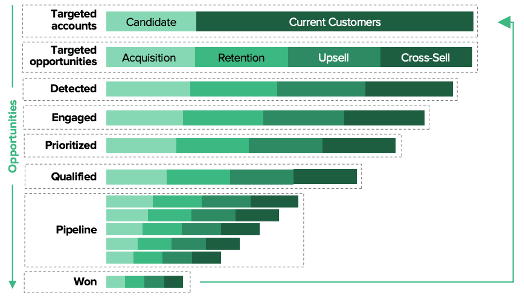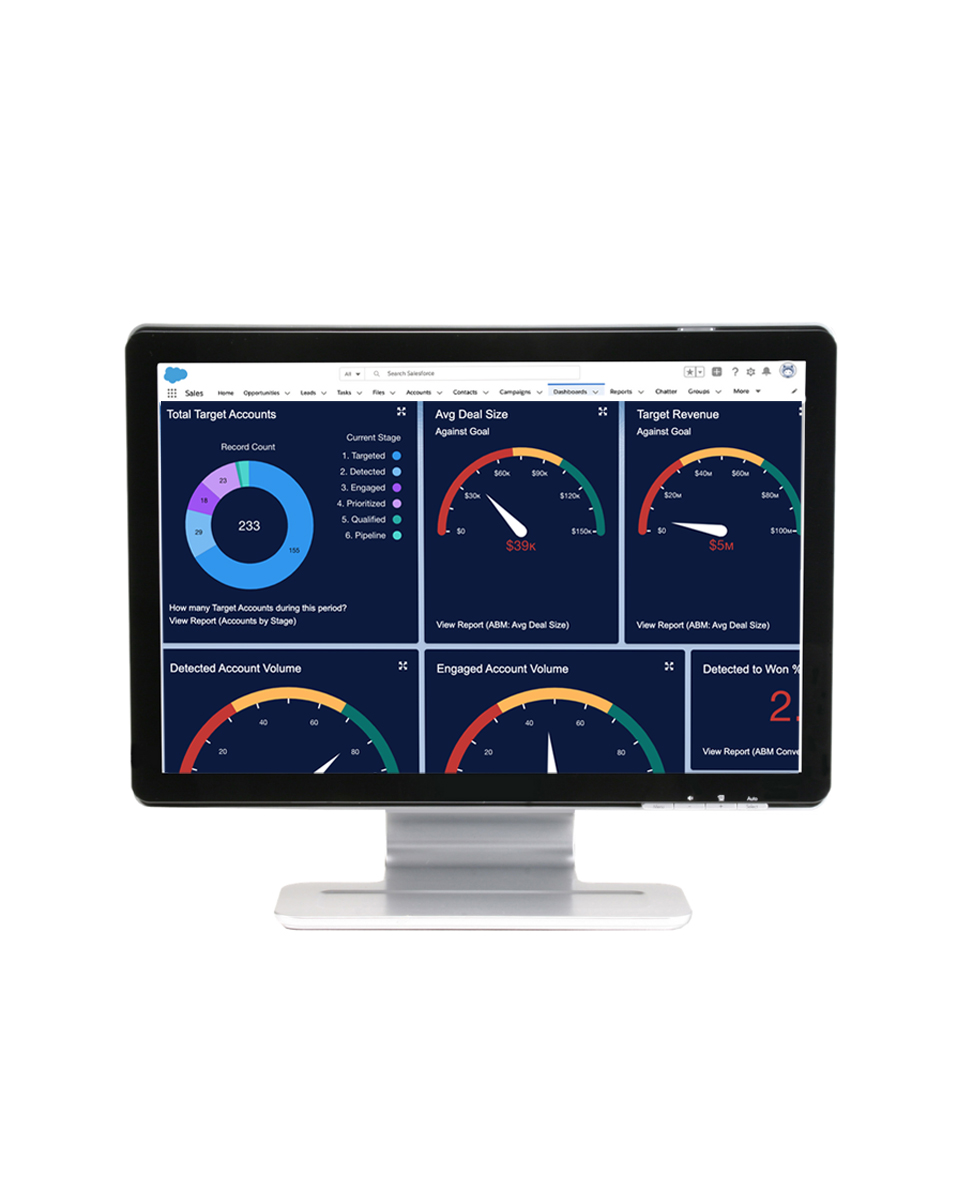Intent data providers made account-based marketing (ABM) strategies practical to use at scale. It didn’t take long after that for the ABM approach to quickly become the go-to strategy for B2B marketers. The Forrester B2B Revenue Waterfall provides an excellent framework for ABM.

At the top, marketers identify targeted accounts, including new and current customers, and opportunities to bring in new customers and retain, cross-sell or upsell current customers. Then marketers can monitor account activation, tracking when the account shows intent and engagement and working with the sales team to prioritize buying groups for qualification. After the handoff to sales, marketing can keep an eye on accounts as they move to the pipeline and become closed/won business.
In marketing strategies that target individuals, measurement is the key, and that’s true for ABM too. Here are three must-have elements of an effective ABM strategy for B2B marketers:
- Single source of data truth: One key advantage of an ABM approach is that marketing and sales are finally speaking the same language — sales have always thought in terms of accounts and opportunities, and ABM marketers do too. But true alignment requires a single source of data truth that is credible and sharable across the organization. The CRM is the obvious choice — it’s a robust database with a rich ecosystem, and B2B companies already use their CRM instance as their de facto revenue system of record. When marketing data is housed in the CRM, marketing can share dashboards and metrics with sales colleagues, creating stronger alignment.
- Measurement within the Forrester B2B Revenue Waterfall framework: Funnel metrics that track lead volume, the velocity at which buying group members move through the funnel, and account conversion rates are essential. So are attribution tools to evaluate campaign effectiveness. Whether you use Full Circle Insights Response Management for full-funnel visibility or Campaign Attribution for marketing impacts revenue reports — right inside the CRM.
- Regular meetings with sales: An ABM marketing strategy puts the sales and marketing teams on the same page since they’re both focused on accounts and opportunities, but it’s also a golden opportunity to improve collaboration between the two teams. Marketing and sales teams should meet regularly to analyze data, identify opportunities to improve performance against goals, and take action items as appropriate to make adjustments. Regular meetings are essential because they keep both teams on track to hit revenue targets.
The ABM approach is transformative for B2B organizations. It addresses the reality that purchases now involve multiple people rather than a single decisionmaker. ABM provides an opportunity for the company to calibrate its messaging strategy, directing content to the right people at the right time so that members of the buying group receive messages when they’re most receptive to them at each stage of the customer journey.
All of this relies on measurement — full-funnel visibility and the ability to attribute revenue to campaigns. A single source of data truth, measurement within the ABM framework, and regular meetings with sales to apply the insights gained from measurement can improve process efficiency and enable more efficient investment of marketing spend.



